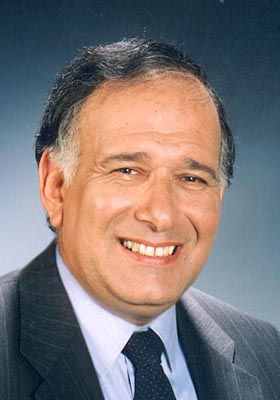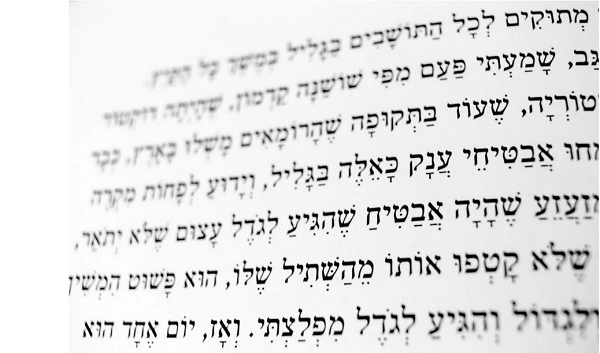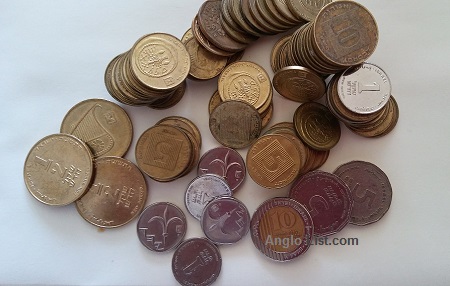Living in Haifa – The Worker’s City – Aliyah, Relocation & Lifestyle.
Hebrew: חיפה – עיר הפועלים – מקום מגורים וקליטת עולים חדשים
Living in the City of Haifa
The city of Haifa is the largest and most cosmopolitan city in northern Israel. It is the third largest city in Israel with a population of over 300,000. Whether you have immigrated, planning your Aliyah or relocation, on vacation or a business trip, the city of Haifa has much to offer.

Haifa Urban Infrastructure
Haifa is a multi-cultural city. People from five different religions: Jews, Moslems, Christians, Druze and Bahai co-exist and live side-by-side in harmony, peace and mutual respect.
Haifa has developed into three tiers, from the lower city downtown to the upper city on the Carmel.
1. The first tier is Haifa’s oldest neighborhood – Wadi Salib, the Old City center, and the down-town area, near the port. Wadi Salib stretches to the west across to Wadi Nisnas which is the center of Arab life in Haifa today. In the 19th century the German Colony, near the port, was built by the Templars.
2. The second tier, nestled above the first, forms the Hadar neighborhood which was constructed in the early 1900’s. The Hadar has 3 distinct districts; Hadar HaCarmel, the commercial district, situated above and around Haifa’s Arab neighborhoods and fairly close to the port. Ramat Hadar, is a few streets up of Hadar HaCarmel and Hadar Elyon or Upper Hadar, also a residential area, is halfway up Mount Carmel. The Upper Hadar has become a popular option for English speakers who are looking for more affordable housing options.
3. Beyond this, in the third tier, are the more affluent neighborhoods such as the French Carmel, Central Carmel, Romema, Carmeliya, Vardiya, Ramat Golda, Ramat Alon and Denya.
Beaches in Haifa
Haifa’s natural beauty includes kilometers of golden beaches and blue seas, a variety of breathtaking panoramas from the Carmel Mountain range, greenery and forests with deep trails and the wildlife of the Carmel National Park.
Unlike many other cities around the world, Haifa’s beach-front properties are not prime real-estate. The most affluent suburbs are on top of Mount Carmel. The reason for this is simply the weather. There are vast differences in temperature and humidity and most people prefer the cooler, more moderate conditions that prevail higher up the mountain.
Economy & Commerce
Haifa plays an important part in Israel’s economy. The Hadar neighborhood which forms part of the second tier – is a commercial center as well as a residential area.
Shopping in Israel’s shuks – fresh produce markets – offer an unique cultural experience and Shuk Talpiot (The Talpiot Market) – a fruit and vegetable market is no exception. The Turkish Market in downtown Haifa has long closed down.
Haifa’s malls and shopping centers include The Grand Canyon, the Cinemall, Horev Center Mall, Panorama Center, Castra Center and the Haifa Azrielli Mall. More about shopping in Israel
Haifa’s Neighborhoods & Suburbs
Popular among English speaking olim are the neighborhoods of Ahuzza, Upper Hadar and Neve Shaanan. Each suburb offers a distinctly different lifestyle.
Ahuzza
Ahuzza is the general name of a suburb and neighborhoods that includes Ahuzza, Carmeliya, Western Carmel and Ramat Begin. They are fairly affluent neighborhoods and are home to both religious and secular communities. In relative close proximity to Haifa University, many international students and expats make this neighborhood their home.
The Upper Hadar
The Upper Hadar is situated halfway between The Central Carmel neighborhood and the Hadar shopping district. Property prices are lower and if you have a smaller aliyah or relocation budget, you are likely to find appropriate housing here. On all major bus routes, the Metronit and the Carmelit route and in close walking distance to shopping, this is an ideal location if you do not have your own car. The Upper Hadar offers wonderful views of Haifa Port, the bay and Galilee and even further north one can easily see Mt. Hermon in the Golan Heights. The Upper Hadar is also home to a sizable Bahai community. For the duration of their required volunteer work, Bahais enjoy living here as it is close to The Bahai Temple, the Courts of Justice as well as The Terraces.
Neve Shaanan
To the east of the city also on the second tier of Mount Carmel lies one of Haifa’s larger neighborhoods – Neve Sha’anan. Neve Shaanan is a large residential and commercial center with a selection of suburban shops, supermarkets, restaurants and pubs. The Grand Canyon, Haifa’s largest mall is situated in the Neve Sha’anan neighborhood. Neve Sha’anan has a library and even a small cinema.
Neve Sha’anan is very popular choice for English speaking, young immigrant, observant Jewish couples. It is also very popular among local and international students, as it is in this neighborhood that you will find The Technion – The Israel Institute of Technology. Thousands of students from all over Israel come to study at this internationally acclaimed institution of higher learning. The Technion has a large International School and students from all over the world come here to complete their studies.
Neve Sha’anan is not far from the University of Haifa and using public transport options it’s only a 20 minute commute to the campus. The new cable car will connect Haifa University and Technion students with the Merkazit Hamifratz central station and transport hub.
Ramat HaNassi
Ramat HaNassi is a new neighborhood at the southern entrance to Haifa. The complex includes over 1,000 apartments in 18 towers. Many of the towers are already occupied. The neighborhood will include preschools, a municipal elementary school, a park and a modern commercial center. Ramat Hanassi is a stone’s throw away from Haifa’s beaches and the MATAM Hi-tech Industrial Park
Cost of Housing: Purchase Price & Rental Price
The cost of housing in Haifa is steadily increasing and one million shekels does not get you very much these days.
A home in the more affluent neighborhoods such as in the French Carmel, Central Carmel (Merkaz HaCarmel), Carmeliya, Vardiya, Ramat Golda and Ramat Alon
Purchase price:
- 2 bedroom Apt- 1.2 million NIS
- 3 bedroom Apt- 1.4 million NIS
- 4 bedroom Apt- From 2 million NIS
Rental price:
- 2 bedroom Apt- 3,000 NIS and up
- 3 bedroom Apt- 3,500 NIS and up
- 4 bedroom Apt- 3,800 NIS and up
Homes in the exclusive Denya neighborhood, near The University of Haifa, will cost considerably more. Of course, cheaper housing options can be found in Haifa.
Average purchase price in Ramat Hanassi:
- There are no 2 bedroom apartments in the Ramat Hanassi complex.
- The starting price for a 3 bedroom Apt. is 1.8 million NIS. There are also 4 and 5 bedroom apartments as well as a selection of penthouses
Purchase price in Romema, Neve Shannan and the Upper Hadar:
- 2 bedroom Apt- 700,000 NIS
- 3 bedroom Apt- 800,000 NIS
- 4 bedroom Apt- 1 million NIS and up
Rental price in Romema, Neve Shannan and the Upper Hadar:
- 2 bedroom Apt- 2,250 NIS and up
- 3 bedroom Apt- 3,300 NIS and up
- 4 bedroom Apt- 3,500 NIS and up
Kiryat Shmuel (a religious neighborhood) and Kiryat Chaim are two neighborhoods on the northern perimeter of Haifa (off the Haifa -Akko Rd) and housing is considerably cheaper.
Purchase price in Kiryat Shmuel and Kiyat Chaim:
- 2 bedroom Apt- 700,000 NIS
- 3 bedroom Apt- 800,000 NIS
- 4 bedroom Apt- 1 million NIS and up
Rental price in Kiryat Shmuel and Kiyat Chaim:
- 2 bedroom Apt- 2,250 NIS and up
- 3 bedroom Apt- 3,300 NIS and up
- 4 bedroom Apt- 3,500 NIS and up
Prices in Tirat HaCarmel
Tirat HaCarmel is one of Haifa’s satellite towns at the southern entrance to the city. Many new building projects and have changed the face of the town. Apartments in new building projects, ideally suited to young and growing families are in demand. Apartments are spacious; 4 bedrooms, 2 bathrooms, a balcony, parking and many other features. These large apartments are selling at around 1.5 million shekels. Rentals are in the 3,000NIS/month range.
Tirat HaCarmel’s industrial zone is home to numerous industries, hi-tech and SMB’s. Tirat HaCarmel is a few kilometers from MATAM.
Tirat HaCarmel is considerably cheaper than its rival neighborhood – Ramat HaNassi, in Haifa.
Haifa’s Transport Options
Haifa is a hub for public transport that serves the north and north-eastern parts of Israel.
Haifa has 2 central bus stations at Merkazit Hof HaCarmel at the southern entrance to Haifa and Merkazit Hamifratz in the Haifa Bay area.
There are 4 train stations; Merkazit Hof HaCarmel, Bat Galim, Hashmona down-town and Merkazit Hamifratz.
The Metronit, a rapid transport system, operates 3 lines that run from the southern entrance of Haifa and all the way north to the Krayot (Haifa satellite towns). Soon there will be a 4th line serving Haifa and Nesher.
The Carmelit is an underground funicular that goes from Paris Square (Kikar Paris) downtown – to the Central Carmel (Gan HaEm). The entire journey takes about 7 minutes and there are 6 stops along the route.
Night-time bus lines – Kavei Leila operate, during the night on weekends and during school holidays when the regular buses routes come to a halt. There are 7 night-time bus routes that serve the Haifa area.
Many bus routes to and from Merkazit Hamifratz and Merkazit Hof HaCarmel travel via the Carmel Tunnels (Minharot HaCarmel toll road) which cuts traveling time to the other side of Haifa, down significantly.
The new Haifa Cable car mass transport system, will run from Merkazit Hamifratz to the Technion and then onto Haifa University.
Haifa Universities & Colleges
Haifa is home to three well respected academic institutions, the University of Haifa, the Technion Institute of Technology and the Gordon College of Education. Many other smaller vocational colleges offer a wide variety of courses.
Many Technion and university graduates are employed in the hi-tech park – MATAM (short for Merkaz Ta’asiyot Mada – Scientific Industries Center) at the southern entrance to the city. MATAM offers about 10,000 job opportunities and hosts numerous Israeli and international hi-tech companies such as Intel, IBM, Microsoft, Motorola, Google, Yahoo!, Elbit, Zoran, Philips, and Amdocs. Some of these companies have their manufacturing and R&D facilities here.
The Technion is situated in the Neve Shaanan neighborhood.
The University of Haifa has two campuses – 1) Campus HaNamal, downtown, near the port and 2) Atop of the Carmel mountain just a little beyond the exclusive neighborhood of Denya.
I the past few years, Haifa has seen a steady increase in expats and foreign workers who relocate to Haifa and are contracted to work in the many hi-tech companies in and around MATAM as caregivers and foreign students.
Haifa Schools
There are many municipal elementary schools scattered across Haifa which feed into the various and very large middle- and high-schools. Herzl School and Alliance are particularly geared for English speaking children who live in close proximity. The Riali School is a private school, with 3 branches in Haifa and it offers immigrant children wider educational options. Private school fees are high. The Leo Baeck High School is a semi-private school in the French Carmel neighborhood. Offering a high standard of education Leo Baeck is a popular choice for many immigrants.
The Haifa Port
The Haifa port is Israel’s second largest port with Ashdod being the largest. The petroleum refinery lies just to the east of Haifa in the heart of the industrial area close to the Check-post.
If you are planning on bringing a vehicle to Israel as part of your Aliyah benefits, your car will most likely be offloaded at Haifa Port where you will have to arrange to have it collected once all the customs and paperwork have been taken care of.
The Haifa Airport
Haifa has an airport for small aircraft. There is ongoing talk to enlarge the runway which will make it possible for larger aircraft to land and opening it up to international travel. In the meantime flights to Eilat depart from Ben Gurion International Airport and land at the Ilan & Assaf Ramon Airport outside of Eilat.
Top Things to do in Haifa – Culture & Entertainment
Haifa’s German Colony has undergone a major renewal, the buildings have been restored and renovated and the neighborhood, especially along Ben-Gurion Blvd., has turned into the center of Haifa nightlife with wonderful restaurants and pubs. The magnificent day and night views of The Bahai Temple and terraces from Ben Gurion Blvd make for a special evening out for locals and tourists too.
Since Haifa University’s Hanamal campus opened the surrounding area (near the old Turkish Market) has undergone a revamp. Lot’s of trendy bars, restaurants, eateries and plenty of al-fresco dining options on and around the campus.
Going to the Movies
The Cinemall (ex Lev Hamifratz) incorporates the old Lev Hamifratz shopping mall and restaurants as well as the Yes Planet movie theaters. Twenty three cinemas screen all the latest, popular films. There is a 4D theater as well.
The Cinematheque forms part of Haifa’s Auditorium complex in the Central Carmel. Foreign and art movies are screened here.
The Grand Canyon shopping mall re-opened their cinema complex moving it from the top floor to lower ground levels.
The Haifa Symphony Orchestra
The Haifa Symphony Orchestra was founded in 1950 and in recent years has become the focal point of musical life in Haifa and the north of Israel. World Acclaimed Maestro Xu Zohng, is the music director of the HSO. Concerts are held in the Ethos building which forms part of the Auditorium complex.
Haifa Museums
The Hadar neighborhood (2nd tier) was home to the very first Technion campus founded by Albert Einstein. Today this historic building houses the Madatech Science and Technology Museum. Other museums in Haifa include: The Maritime Museum, The Railway Museum, The Tikotin Japanese Art Museum, The Natural History Museum, The Prehistoric Museum at the zoo, The Hecht Museum at Haifa University, The Haifa Art Museum and the Mane Katz Museum all exhibit a large variety of collections.
Hikes in Haifa
Take advantage of Haifa’s natural beauty. Hiking, having a picnic and enjoying the nature of the Carmel Forest is just one of a long list of fun and wonderful things to do and even free attractions to visit in Haifa.
Haifa’s English Speaking Immigrant & Ex-pat Community
Haifa Municipality and the Ministry of Immigrant Absorption have been actively promoting Haifa as an Aliyah destination. In addition to the regular benefits, Haifa Municipality offers the new oleh (immigrant) additional Aliyah benefits. Consult with the Project Coordinator (Smadar Stoller-Porat) for the latest information.
The English speaking community has grown significantly in the past 10 years; Americans, Canadians, South Africans, Brits and Australians all make up the mix. Besides the more affluent suburbs on the Carmel, the Hadar has become a popular residential option for these olim, who are looking for more economical housing alternatives.
Up until about 15 years ago, you would hardly hear a word of English spoken in Haifa. But now, The University of Haifa and the Technion attract many international students coming from India, Japan, Germany and in fact from every corner of the globe. At MATAM you will find expats everywhere working in hi-tech. Filipinos and Sri-Lankans work as caregivers and of course Haifa’s Bahai community brings volunteers who work at the Bahai World Center.
Religious Communities in Haifa
Jews, Moslems, Christians, Druze and Bahai co-exist and live side-by-side in harmony, peace and mutual respect.
There are many Jewish Orthodox synagogues in Haifa where Anglos prefer to pray, the main one being on Derech HaYam in the Central Carmel. Many English speakers belong to the Maor Yehuda Synagogue in Ramat Almogi and also the Denya Shul.
The Conservative Moriah Congregation is on Horev Street in Ahuzza and the Reform Congregation, at the Leo Baeck Synagogue in the French Carmel, as well as at Or Hadash in Ahuzza.
Haifa is the world center for the Bahai religion. Consequently there is a large community of Bahai volunteers living in Haifa doing their obligatory volunteer and community work. Bahais are obligated to make a pilgrimage to Haifa during their lifetime. Part of the pilgrimage includes walking up the stairs of the terraces. Details of Bahai religious activities can be accessed via the Bahai’s own website.
There is a fairly large Christian Arab and Catholic Filipino community in Haifa and they participate in church services and mass at any of the many churches.
There is also a Messianic movement in Haifa.
Networking Events
Numerous social and networking activities are available most of them have groups on Facebook. Haifa Young English Speakers (for under 35’s), Haifa’s Mature English Speakers (over 50’s), many Technion and University groups as well as Anglo-list’s Facebook group are great starting points for social networking.
It is said that “Haifa works, Jerusalem prays, and Tel Aviv plays”. If you live, are planning on living in Haifa or just visiting, the city is filled with an abundance of scenery, colors, voices, scents and flavors and is sure to offer you many wonderful opportunities.


 I am pleased to see that the English speaking oleh community of Haifa is growing and contributing to the city and its development. Haifa is a special city, with a multicultural society – its residents coming from all different communities around the world.
I am pleased to see that the English speaking oleh community of Haifa is growing and contributing to the city and its development. Haifa is a special city, with a multicultural society – its residents coming from all different communities around the world.


